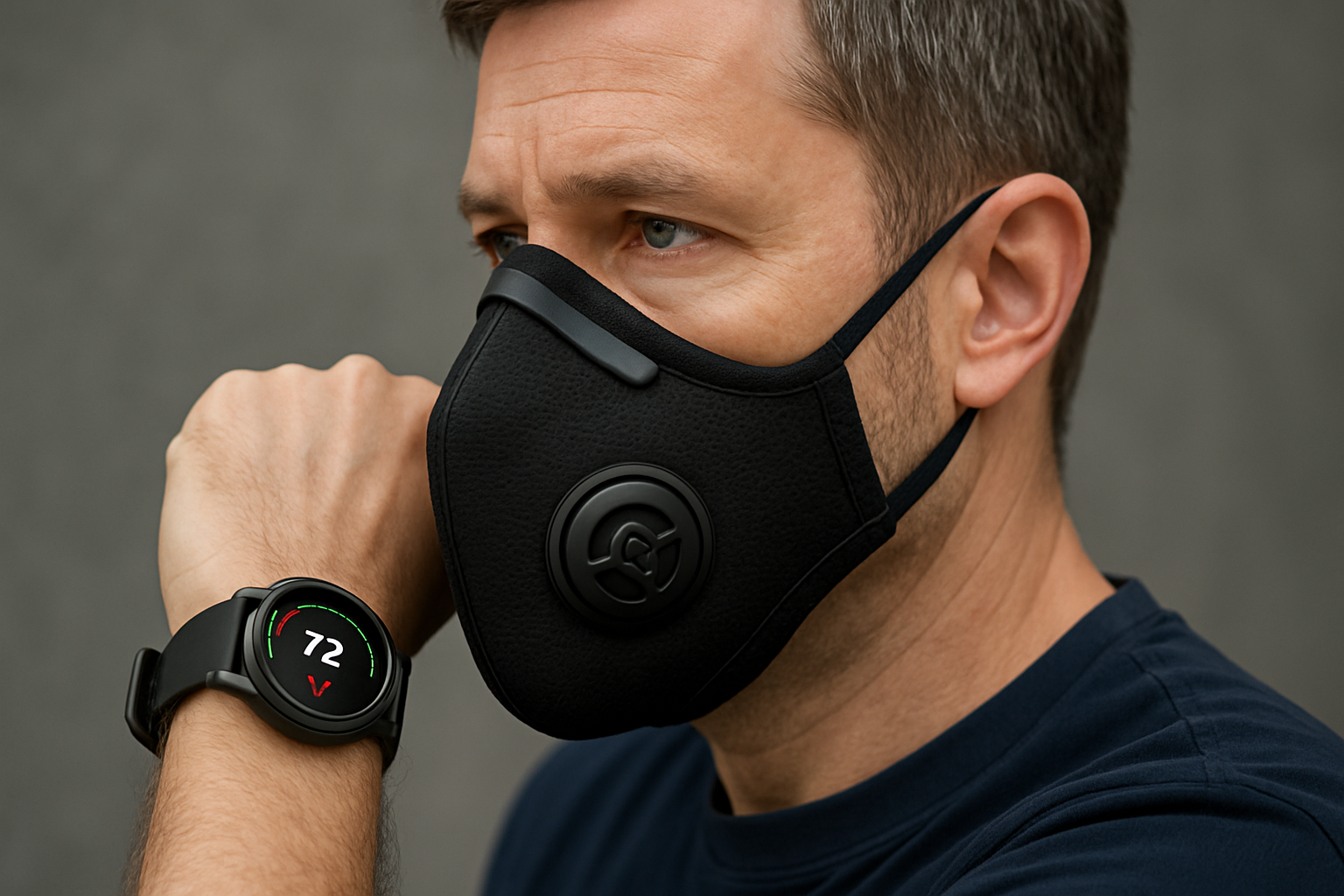
Wearable technology has revolutionized the way we monitor our health. From smartwatches that measure heart rate and blood oxygen to fitness trackers that monitor stress and recovery, we’ve become accustomed to using data to optimize every aspect of our well-being. But there’s one health factor that often gets overlooked: the air we breathe.
As awareness about air pollution and allergens grows, more people are turning to filter masks to protect their lungs during daily commutes, workouts, and outdoor activities. However, if you also use wearables, like a smartwatch, fitness band, or smart glasses, you may have noticed that not every mask works well with your tech setup. Some interfere with sensors, comfort, or data accuracy.
Here’s how to choose a filter mask that keeps your breathing clean without interfering with your wearable sensors or lifestyle data.
Why wearable compatibility matters
Wearables rely on precise contact with your skin to gather data. Devices like the Apple Watch, Garmin, Fitbit, or Oura Ring measure subtle changes in your heart rate, temperature, or blood oxygen through optical or infrared sensors.
Unfortunately, certain masks can affect these readings by:
-
Creating heat buildup around your face and neck, altering skin temperature.
-
Restricting airflow, which may influence blood oxygen (SpO₂) readings during workouts.
-
Adding tension or movement that affects the fit of smart glasses, earbuds, or chest straps.
That’s why it’s important to select a mask that not only filters pollution effectively but also integrates smoothly into your existing tech ecosystem.
Step 1: Focus on lightweight, ergonomic design
The first thing to look for is comfort and weight. A bulky or rigid mask can rub against your smartwatch when tightening straps or adjusting during activity, causing data dropouts.
Modern models like the R-pur anti pollution mask are engineered with advanced ergonomic design and soft, skin-friendly materials that mold comfortably to your face without adding pressure to the neck or ears.
The goal is to maintain your usual sensor placement, whether that’s your wrist, temple, or chest, without friction or shifting caused by the mask. The lighter the mask, the less it interferes with posture, motion tracking, or bio-signal readings.
Step 2: Prioritize breathability and air circulation
Many wearables track performance metrics like heart rate variability, oxygen levels, and recovery through patterns in your breathing and cardiovascular response. When your mask restricts airflow, these readings can become inaccurate, especially during exercise.
Look for masks that use multi-layer nanofiltration with a low breathing resistance score. The filtration should block fine particles (PM0.1, PM2.5) while still allowing natural air circulation.
This mask: https://www.r-pur.com/en/products/cycling-face-mask, for instance, was specifically designed for cyclists, runners, and commuters who need protection without losing breathability. The design balances filtration and airflow so that your body’s natural oxygen exchange remains unaffected, a crucial factor for maintaining accurate SpO₂ and heart rate readings.
Step 3: Check mask placement and sensor overlap
If you use smart glasses, earbuds, or helmets with built-in sensors, ensure the mask’s straps don’t interfere with their position. Masks with wide headbands or behind-the-ear straps can overlap with device sensors, causing fit issues or pressure points.
Opt for masks that use adjustable neck or head straps, allowing you to customize the fit. This avoids interference with earbuds or optical sensors placed near the temples.
R-PUR’s magnetic adjustment system, for example, allows wearers to fine-tune the seal and tension, ideal for users combining multiple wearable devices during workouts or commutes.
Step 4: Mind the material, temperature and moisture matter
Some wearable sensors (especially skin temperature and sweat-tracking models) can be affected by humidity and heat. Masks that trap moisture or heat near your face may cause readings to drift.
Choose masks made from breathable, moisture-wicking materials. A well-ventilated design helps maintain stable skin temperature, ensuring your smartwatch or fitness tracker receives accurate data during long commutes or outdoor activities.
Step 5: Don’t sacrifice protection for convenience
It can be tempting to choose an ultra-thin mask for comfort, but not all are capable of filtering the smallest harmful particles. The ideal balance lies in advanced filtration with ergonomic comfort.
The best-performing models, like R-PUR’s, use multi-layer nanofiber technology that captures pollution, allergens, and even microscopic metals, while keeping airflow resistance low. This means your lungs get clean air, and your wearables get clean data.
Step 6: Pair your mask with air-quality apps
To complete your wellness setup, integrate your wearable data with environmental tracking. Air-quality apps such as AirVisual, Plume Labs, or Breezometer provide real-time pollution data. Combine this with your wearable’s performance metrics and note how your body responds to different environments.
You’ll notice trends, for example, higher heart rates or reduced recovery scores on poor air days. This insight helps you use your filter mask strategically and protect yourself when exposure risk is highest.
Final thoughts
As health tech continues to evolve, it’s no longer enough to track your performance, it’s equally important to protect the systems that make performance possible. Your lungs are your body’s natural engine, and they deserve as much care as your heart or muscles.
Choosing a filter mask that complements your wearable sensors allows you to get the best of both worlds: accurate health tracking and superior respiratory protection.
